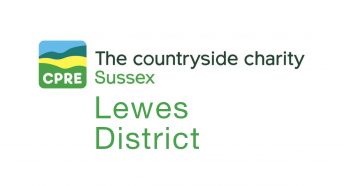Wealden District Update February 2019
Although Wealden District had a National Planning Policy Framework (NPPF) compliant local plan adopted in 2013, a review was required once a solution was available for capacity issues at the two Hailsham sewage treatment works.
However, Wealden District Council opted not to review the existing plan but to compile a new one and the proposed submission went out to consultation in September 2018.
Housing – “need” is deemed to have increased since 2013 and the new local plan proposes 14,228 new dwellings to 2028, an increase of around 9,000 over the Core Strategy.
The majority of the development is to be around Hailsham and Stone Cross.
CPRE Sussex made several responses to the consultation and has requested to be represented at the examination.
Wealden District Council submitted the plan on 18 January to the Planning Inspectorate. An inspector has yet to be appointed.
The single main modification between consultation and submitted plan is that the Pevensey Levels will now not suffer a significant adverse effect from the growth envisaged in the plan.
Traffic – New developments has been constrained since 2016 by the concern that any additional traffic would increase the nitrogen load on Ashdown Forest and have an adverse effect on conservation objectives.
Wealden District Council has only been granting permission to sites where it could be shown there would be no increase in traffic emissions.
This resulted in some highly creative assessments of traffic, (most of which had no factual basis), but were put forward by officers to show no harm and accepted by both planning committees.
Ashdown Forest – Wealden District Council has also been objecting to developments in neighbouring authorities on the basis that the permissions would harm Ashdown Forest.
None of these authorities accept Wealden District Council’s position, nor does Natural England who believe that the continuing reduction in background nitrogen deposition will offset the increase from more traffic.
However, with nitrogen deposition to Ashdown Forest being well above the critical load, more emissions from development mean that the overall reduction in deposition is not as great as it would be without new development and thus will fall foul of the Habitats Regulations.
It is very disappointing that the government body charged with protecting our natural heritage is content to support measures that clearly increase harm. Wealden District Council has been monitoring the effects of nitrogen on the Ashdown Forest flora for several years and considers that their planned growth will exacerbate the continuing adverse effects. They believe that appropriate mitigation can be put in place on developments to negate the harm.
CPRE Sussex believe the proposed mitigation will be totally ineffective.
Mitigation measures published to date include the provision of electric vehicle points on developments, provision of travel plans and the ability to connect to high speed broadband. Wealden District Council’s Habitats Regulations Assessment (HRA) does not contain any analysis showing that the mitigation will have any effect and common sense indicates that it will not. A HRA is required to show beyond reasonable scientific doubt the effectiveness of measures to reduce harm and Wealden District Council’s document is silent on this point.
Although Natural England has stated that mitigation is not required, it does say that Wealden District Council’s measures will not reduce traffic emissions. Wealden District Council’s consultant charged with seeking suitable mitigation measures has also indicated that Wealden District Council’s proposed mitigations will not be effective.
It is therefore our belief that Wealden District Council’s submitted plan does not comply with the Habitats Regulations.
But the current situation is a little opaque as it is clear that the HRA published on 25 January with the remainder of the submitted documents has been updated and contains changes from the August 2018 document included in the Reg. 19 Consultation. These changes have yet to be fully identified and understood.
Since the publication of the proposed draft submission plan last June, Wealden District Council has been granting conditional approval to the backlog of applications that have been held up by the Ashdown Forest nitrogen issue.
But despite granting permission for over 1,000 dwellings in this period, no Decision Notices have been issued for large sites as the decision is subject to an S 106 agreement for a financial contribution towards a package of mitigation measures to ensure no adverse effect on Ashdown Forest.
Finding acceptable mitigations to achieve the requirement for no adverse effect could prove very challenging.
Should those bodies charged with upholding the rules be minded to take a Quixotic approach, we could see developments proceed that will cause harm to both Ashdown Forest and Lewes Downs.
Nick Daines





